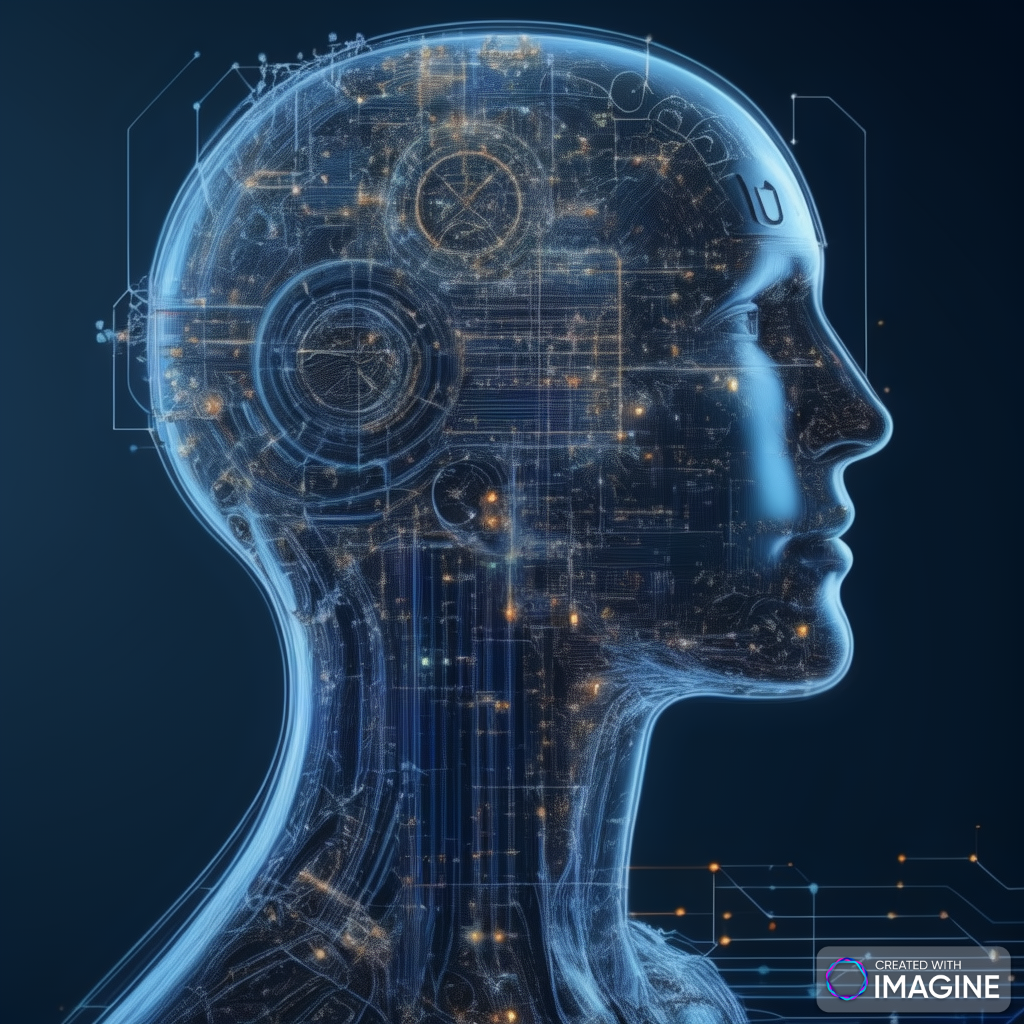In the realm of artificial intelligence (AI), the quest for success hinges upon two fundamental pillars: intelligence and artifact. These twin elements serve as the bedrock upon which the edifice of AI advancement is constructed, each playing a distinctive yet complementary role in shaping the trajectory of AI development. In this exploration, we delve into the significance of these components and elucidate how their synergy propels AI towards unprecedented feats.
Intelligence: The Cognitive Essence
At the core of AI lies the concept of intelligence, a quintessential attribute that imbues machines with the capacity to perceive, reason, and learn. Intelligence in AI manifests itself through a myriad of techniques, ranging from classical rule-based systems to cutting-edge deep learning algorithms. It encompasses the ability to analyze complex data, discern patterns, and make informed decisions autonomously. Just as human intelligence underpins our cognitive prowess, the intelligence engineered into AI systems enables them to tackle a vast array of tasks, from natural language processing to image recognition, with remarkable efficacy.
However, the pursuit of intelligence in AI is not merely confined to the replication of human-like cognitive functions. Rather, it extends to the augmentation and enhancement of human capabilities, opening new vistas of possibility across diverse domains. AI-driven intelligence acts as a catalyst for innovation, revolutionizing industries, from healthcare to finance, by unlocking insights, optimizing processes, and fostering unprecedented levels of efficiency and precision.
The Artifact: Enabling Intelligence to Flourish
While intelligence forms the essence of AI, the artifact serves as its tangible vessel, encapsulating and disseminating intelligence to the broader ecosystem. The artifact encompasses the diverse array of technologies, platforms, and infrastructures that facilitate the deployment and utilization of AI capabilities. From sophisticated neural networks to user-friendly AI applications, the artifact encompasses the entire spectrum of tools and frameworks that enable the realization of AI’s potential.
Moreover, the artifact encompasses not only the technological artifacts but also the socio-economic and ethical frameworks that underpin the responsible development and deployment of AI. It entails considerations regarding data privacy, algorithmic transparency, and societal impact, ensuring that AI serves as a force for good and remains aligned with human values and aspirations.
Synergy and Success: The Intersection of Intelligence and Artifact
The true potential of AI emerges at the nexus of intelligence and artifact, where the seamless integration of cognitive capabilities with purpose-built infrastructure unleashes transformative power. This synergy facilitates a virtuous cycle of innovation, wherein advances in AI intelligence drive the evolution of artifacts, while the refinement of artifacts amplifies the efficacy and reach of AI intelligence.
Furthermore, the symbiotic relationship between intelligence and artifact engenders a dynamic ecosystem characterized by continual iteration and improvement. As AI systems ingest more data, refine their algorithms, and adapt to evolving contexts, the artifacts that encapsulate them evolve in tandem, catalyzing a feedback loop of innovation and progress.
In essence, the success of AI hinges not solely on the sophistication of its algorithms or the prowess of its models, but rather on the harmonious convergence of intelligence and artifact. It is through the synergy of these twin pillars that AI transcends its limitations, unleashing a wave of innovation that reshapes the contours of human endeavor and augurs a future brimming with possibility.
In our exploration of the fundamental components underpinning AI success, we’ve elucidated the pivotal roles of intelligence and artifact in shaping the trajectory of artificial intelligence. However, the landscape of AI is rich and multifaceted, extending far beyond these foundational pillars. Let us embark on a deeper journey, unraveling additional dimensions that contribute to the vitality and dynamism of the AI ecosystem.
Ethical Imperatives:
Integral to the advancement of AI is the ethical imperative to ensure that its deployment aligns with principles of fairness, transparency, and accountability. As AI systems exert increasing influence over critical aspects of human life, from healthcare to criminal justice, ethical considerations take center stage. Establishing robust frameworks for responsible AI development and governance is imperative to mitigate biases, safeguard privacy, and engender trust among stakeholders.
Interdisciplinary Synergy:
AI’s success transcends disciplinary boundaries, drawing upon insights and methodologies from diverse fields such as computer science, mathematics, psychology, and linguistics. Interdisciplinary collaboration fosters a rich tapestry of perspectives, catalyzing innovation and pushing the boundaries of what AI can achieve. By embracing a holistic approach that integrates knowledge from disparate domains, AI can tackle complex challenges with nuance and sophistication.
Human-Centric Design:
Amidst the technological marvels of AI, it is essential to maintain a steadfast focus on human-centric design principles. AI systems should be intuitive, accessible, and inclusive, empowering users of varying backgrounds and abilities to harness their full potential. Designing AI artifacts with empathy and foresight ensures that they augment human capabilities, enhance user experiences, and foster equitable access to technological advancements.
Continual Learning and Adaptation:
The dynamism of the AI landscape necessitates a culture of continual learning and adaptation. As new data streams emerge, algorithms evolve, and societal needs evolve,  systems must possess the agility to pivot and recalibrate their strategies accordingly. Embracing principles of lifelong learning and adaptive intelligence equips AI with the resilience to thrive amidst uncertainty and complexity, driving sustained innovation and progress.
systems must possess the agility to pivot and recalibrate their strategies accordingly. Embracing principles of lifelong learning and adaptive intelligence equips AI with the resilience to thrive amidst uncertainty and complexity, driving sustained innovation and progress.
Global Collaboration:
AI’s global impact necessitates collaborative efforts on a scale that transcends geographical and geopolitical boundaries. By fostering international partnerships and knowledge-sharing initiatives, the AI community can leverage collective expertise and resources to tackle shared challenges and seize collective opportunities. Such collaboration fosters diversity of thought, accelerates innovation, and amplifies the positive impact of AI on a global scale.
Ecosystem Resilience:
In an increasingly interconnected world, the resilience of the AI ecosystem is paramount. Building robust infrastructures, fortifying cybersecurity measures, and cultivating a culture of responsible stewardship safeguard against threats and vulnerabilities that may undermine AI’s integrity and reliability. By prioritizing ecosystem resilience, we fortify the foundations upon which AI innovation flourishes, ensuring its enduring relevance and impact.
Empowerment Through Education:
As AI permeates every facet of society, education emerges as a potent catalyst for empowerment and inclusion. Equipping individuals with the knowledge and skills to understand, critique, and harness AI fosters a culture of digital literacy and agency. By democratizing access to AI education and training opportunities, we empower diverse communities to actively participate in shaping the future of AI and charting a course towards inclusive technological advancement.
In traversing these additional dimensions of AI success, we illuminate the rich tapestry of factors that converge to propel artificial intelligence to new heights. From ethical imperatives to interdisciplinary synergy, human-centric design to global collaboration, each dimension adds depth and resilience to the AI ecosystem, paving the way for a future where AI serves as a catalyst for positive transformation, empowerment, and collective prosperity.
In our exploration of the fundamental components underpinning AI success, we’ve elucidated the pivotal roles of intelligence and artifact in shaping the trajectory of artificial intelligence. However, the landscape of AI is rich and multifaceted, extending far beyond these foundational pillars. Let us embark on a deeper journey, unraveling additional dimensions that contribute to the vitality and dynamism of the AI ecosystem.
Ethical Imperatives:
Integral to the advancement of AI is the ethical imperative to ensure that its deployment aligns with principles of fairness, transparency, and accountability. As AI systems exert increasing influence over critical aspects of human life, from healthcare to criminal justice, ethical considerations take center stage. Establishing robust frameworks for responsible AI development and governance is imperative to mitigate biases, safeguard privacy, and engender trust among stakeholders.
Empowerment Through Education:
As AI permeates every facet of society, education emerges as a potent catalyst for empowerment and inclusion. Equipping individuals with the knowledge and skills to understand, critique, and harness AI fosters a culture of digital literacy and agency. By democratizing access to AI education and training opportunities, we empower diverse communities to actively participate in shaping the future of AI and charting a course towards inclusive technological advancement.
Inclusive Innovation:
The democratization of AI innovation is essential to ensure that its benefits are accessible to all segments of society. Encouraging diversity in AI research and entrepreneurship fosters inclusive innovation ecosystems that cater to the unique needs and perspectives of diverse communities. By dismantling barriers to entry and amplifying underrepresented voices, we unlock untapped reservoirs of talent and creativity, driving innovation that serves the needs of humanity as a whole.
Ethical AI Leadership:
Leadership in the AI domain entails not only technical expertise but also a steadfast commitment to ethical principles and societal well-being. Ethical AI leadership involves fostering cultures of integrity, accountability, and transparency within organizations and institutions. By championing ethical best practices and cultivating ethical awareness among stakeholders, AI leaders shape the trajectory of AI development in alignment with human values and aspirations.
As we delve into these additional dimensions of AI success, we uncover the intricate tapestry of factors that converge to propel artificial intelligence to new heights. From ethical imperatives to inclusive innovation, interdisciplinary synergy to ethical AI leadership, each dimension contributes to the resilience, inclusivity, and sustainability of the AI ecosystem. In embracing this holistic perspective, we chart a course towards a future where AI serves as a force for positive transformation, empowerment, and collective flourishing.
In conclusion, as we navigate the ever-expanding frontiers of AI, let us recognize the indispensable role played by intelligence and artifact in driving its success. By fostering a symbiotic relationship between cognitive capabilities and purpose-built infrastructure, we chart a course towards a future where AI serves as a catalyst for progress, empowering humanity to surmount challenges and unlock new realms of achievement.







